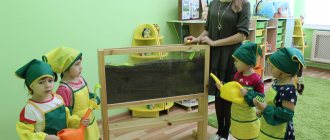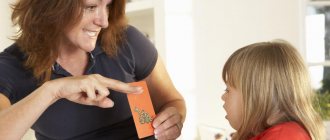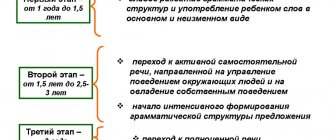Speech therapy. Proficiency Test with Answers (2021) - Option 50
content .. 48 49 50 51 ..Question No. 1
Replacing sounds and words with similar ones in sound or meaning is called: 1) perseveration; 2) elision; 3) echolalia; 4) paraphasia.
(+)
Question No. 2
Bradylalia is. a) pathologically slow speech rate (+)
b) pathologically accelerated rate of speech c) a violation of the dark-rhythmic organization of speech, caused by a convulsive state of the muscles of the speech apparatus
Question No. 3
Speech disorders are characterized by the following features: (exclude the wrong answer) a) They correspond to the age of the speaker (+)
b) Associated with deviations in the functioning of the psychophysiological mechanisms of speech c) Often have a negative impact on the further mental development of the child d) They are stable in nature and do not disappear on their own
Question No. 4
Continue the statement: “FFND is...” 1) a violation of the pronunciation aspect of speech; (+)
2) unformed lexical and grammatical categories;
3) violation of the syllabic structure of the word. Question No. 5
A change in the shade of voice timbre caused by a violation of the relationship between the nasal cavity and the oropharyngeal resonator during phonation is 1) aphonia 2) rhinophonia (+)
3) dysphonia 4) phonasthenia
Question No. 6
What may underlie a violation of the organization of the tempo-rhythmic aspect of speech: 1) organic damage to the extrapyramidal system; 2) organic damage to the medulla oblongata 3) organic damage to the cerebellum.
(+)
Question No. 7
At what stage of the formation of reading skills identified by T.G. Egorov, there is a semantic guess at the level of the entire text: 1) the level of syllable-analytical reading; 2) the stage of development of synthetic reading techniques; 3) stage of synthetic reading.
(+)
Question No. 8
A speech therapist teacher needs to create a task in the form of a sentence for a five-year-old child. Purpose of the task: the child reproduces the sentence. Which option matches the goal? 1) A plumber is fixing a water pipe 2) A policeman rides a motorcycle 3) The boys have built a snowman (+)
4) Hair is cut in a hairdresser
Question No. 9
In what disorder does increasing sound volume in most cases not improve auditory perception, and sometimes even worsens it (exhaustion of auditory function occurs)? 1) hearing loss; 2) sensory alalia; (+)
3) motor alalia;
4) aphasia. Question No. 10
For which of the listed types of speech disorders is “silent mode” used as the first stage of speech therapy work? 1) rhinophonia 2) alalia 3) bradyllalia 4) tachylalia (+)
Question No. 11
Indicate what is an important prerequisite for successful literacy learning: 1) the idea of sound; 2) the idea of a grapheme; 3) idea of the phoneme.
(+)
Question No. 12
A four-year-old child is in a lesson with a speech therapist. What word should the teacher choose to reproduce the sound-syllable structure for the child? 1) cabbage (+)
2) tomatoes 3) frying pan 4) medicine
Question No. 13
Speech therapy is. a) the science of the psychophysical characteristics of the development of children with mental and (or) physical disabilities, the patterns of their education and upbringing b) the science of speech disorders, methods of their prevention, identification and elimination by means of special education and upbringing. Speech therapy studies the causes, mechanisms, symptoms, course, structure of speech disorders, and the system of correctional interventions. (+)
c) a branch of defectology that studies the problems of education and training of mentally retarded people and issues of their social rehabilitation.
Question No. 14
In accordance with the order of the Ministry of Education and Science dated December 24, 2010. No. 2075 “On the duration of working hours (standard hours of teaching work for the wage rate) of teaching staff” - the weekly workload of a speech therapist teacher in educational institutions is: (choose the correct answer) 1) a speech therapist teacher has an irregular work week 2) 20 hours per week week (+)
3) 24 hours a week 4) 36 hours a week
Question No. 15
Passive repetition of individual words or phrases without understanding their meaning is called: 1) logorrhea; 2) paraphasia; 3) hyperacusis; 4) echolalia. (+)
Question No. 16
Which of the following speech disorders belongs to disorders of the internal formulation of utterances? 1) bradyllia 2) aphasia (+)
3) dyslalia 4) dysphonia
Question No. 17
If instead of the word “tomato” a child pronounces “bamidor”, this may indicate that he has 1) a softening defect 2) a voicing defect 3) a deafening defect (+)
4) there is no correct answer
Question No. 18
The leading mechanism of speech development of students and pupils is (choose the correct answer, one): 1. individual approach; 2. formation of neoplasms; (+)
3. intact intelligence and intact innervation of the peripheral speech apparatus;
4. the ability to express a thought through speech and writing Question No. 19
If the structure of the organs of the articulatory apparatus is disturbed, disturbances in sound pronunciation most often manifest themselves in the form of: 1) confusion; 2) replacement; 3) distortions; (+)
4) passes;
Question No. 20
Disorders of the structural and semantic design of statements include: 1) alalia; (+)
2) rhinolalia;
3) dyslalia; 4) all answers are correct. Question No. 21
Which speech disorder primarily affects the fluency and rhythm of speech: 1) alalia; 2) stuttering; (+)
3) dyslalia.
Question No. 22
Phonemic perception is: 1) mental actions to analyze or synthesize the sound structure of a word; 2) special mental actions to differentiate phonemes and establish the sound structure of a word; (+)
3) subtle, systematized hearing, which has the ability to carry out operations of discrimination and recognition of phonemes that make up the sound shell of a word;
4) there is no correct answer. Question No. 23
What violations of sound pronunciation are an indicator of alalia in the differential diagnosis of it with dysarthria: 1) distortion; (+)
2) omissions;
3) replacements. Question No. 24
What sound attack is used when working on voice delivery with people who stutter: 1) hard, 2) aspirated, (+)
3) soft.
Question No. 25
If the structure of the organs of the articulatory apparatus is disturbed, a violation of sound pronunciation most often manifests itself in the form of 1) omission 2) replacement 3) confusion 4) distortion
(+)
Question No. 26
The main areas of activity of a speech therapist teacher include (exclude incorrect answer 1): 1. primary diagnosis of the child’s speech development; 2. psychological correction of personality traits; (+)
3. advisory activities;
4. speech therapy correction Question No. 27
Which of the following tasks cannot be used to assess understanding of the meaning of what was read: 1) detailed retelling, 2) answers to questions about what was read; 3) a brief retelling, 4) drawing up a plan for the text read.
(+)
Question No. 28
What is the cause of motor and oculomotor dysgraphia and dyslexia: 1) impaired phonemic hearing; 2) phonetic hearing impairment; 3) violation of hand, finger praxis or oculomotor functions
.
(+) Question No. 29
Corrective work for disorders of cognitive activity in children with speech pathology is aimed at: 1) solving problems of speech development and cognitive processes on the same speech material; (+)
2) solving problems of the development of cognitive processes;
3) on the formation of communicative and speech activity in the process of gaming or educational activities; 4) all answers are correct. Question No. 30
What is the unit of the morphological code of a language: 1) word; 2) morpheme; (+)
3) offer.
Question No. 31
A speech therapist teacher needs to select a specific task for a six-year-old child in order to study the state of phonemic analysis and synthesis. Which of the tasks corresponds to the goal? 1) task with highlighting a given sound from words (against the background of words) 2) task with highlighting the stressed vowel at the beginning of a word 3) task with highlighting the first consonant in a word 4) task with determining the sequence of sounds in a word
(+)
Question No. 32
Impaired sound pronunciation with normal hearing and intact innervation of the speech apparatus is... a) rhinolalia b) alalia c) dyslalia (+)
Question No. 33
Which of the listed cranial nerves does not innervate the organs of the peripheral speech apparatus? 1) trigeminal; 2) olfactory; (+)
3) wandering.
Question No. 34
What does the child’s transition from physiological tongue-tiedness to dyslalia based on the type of distortions in the pronunciation of speech sounds indicate: 1) a lag in the formation of phonemic hearing; 2) about progress in the formation of phonemic hearing; (+)
3) about the primary inferiority of the organs of articulation.
Question No. 35
One of the characteristics of general underdevelopment of speech of the third level (GSD-III level) according to R.E. Levina is (choose the correct answer option 1): 1. active vocabulary in a “rudimentary” state, consists mainly of sound pronunciations and babbling words ; 2. relatively detailed speech, the active vocabulary is dominated by nouns and verbs; (+)
3. enrichment of speech through the use of certain forms of inflection;
4. passive dictionary, no active understanding of speech Question No. 36
What term denotes persistent, repeated errors associated with difficulties in mastering and applying spelling rules: a) calligraphic; b) spelling; c) dysorthographic.
(+)
Question No. 37
Clinical and pedagogical classification of speech disorders is based on: 1) on a set of psychological and linguistic criteria; 2) on a set of psychological, linguistic and clinical criteria; (+)
3) on psychological criteria;
4) on linguistic criteria. Question No. 38
Child S. has a written speech disorder. Which of the mistakes made by the child when completing written assignments from the teacher indicate the presence of dysgraphia based on a violation of the processes of language analysis - synthesis? 1) replacement of letters 2) underwriting of elements (+)
3) omission of letters and syllables 4) spelling errors
Question No. 39
Features of the speech activity of students, pupils with moderate and severe mental retardation are (one correct answer): 1. lack of planned speech in preschool age, poor vocabulary, sentences in oral speech often built incorrectly and unfinished; written language contains many specific errors; 2. speech with a poorly developed regulatory function, absence of adjectives and adverbs in speech, in most situations “the child’s speech is idling” (M.S. Pevzner); (+)
3. delayed mastery of the grammatical structure of speech, pronunciation defects, limited active vocabulary, difficulties in mastering written language;
4. pathologically slow speech rate and reading rate, inability to briefly retell the text, come up with a title for a story Question No. 40
What type of dyslexia is caused by underdevelopment of the grammatical structure of speech, morphological and syntactic generalizations? 1) agrammatic dyslexia (+)
2) mnestic dyslexia 3) optical dyslexia 4) semantic dyslexia
Question No. 41
The soft palate vibrates with the following type of rhotacism: 1) single-beat; 2) velar; (+)
3) uvular;
4) there is no correct answer. Question No. 42
Erroneous reproduction of words, which consists in combining syllables belonging to different words into one word, is called: 1) perseveration; 2) anticipation; 3) contamination; (+)
4) accommodation.
Question No. 43
What is not one of the causes of functional dyslalia? a) pedagogical neglect b) underdevelopment of phonemic hearing c) shortened frenulum of the tongue
(+)
Question No. 44
Which speech disorder does not belong to the disorders of means of communication identified within the framework of the psychological and pedagogical classification? 1) OHP, 2) stuttering, (+) 3) FFN,
Question No. 45
What rate of speech is typical for stuttering: 1) intermittent; (+)
2) accelerated;
3) slow Question No. 46
What principle of Russian spelling requires the writing of words in accordance with the rules: 1) phonetic; 2) morphological; (+)
3) traditional.
Question No. 47
Which of the following areas is the most important in the initial stages of working with non-speaking children with motor disabilities according to the language approach: a) enrichment and activation of subject vocabulary; (+)
b) formation and development of articulatory motor skills;
c) development of auditory perception; d) enrichment and activation of the predicative vocabulary. Question No. 48
What disorder causes paralysis or paresis of the speech muscles: 1) dyslalia; 2) dysarthria; (+)
3) stuttering.
Question No. 49
Check which of the following symptoms of stuttering does not relate to psychopathological symptoms: 1) convulsions; 2) obsessive states; 3) asthenic syndrome.
(+)
Question No. 50
Practical methods of speech therapy include: 1) games, exercises, modeling; (+)
2) observation, looking at drawings;
3) story, conversation, reading; 4) all answers are correct. Question No. 51
The semantic level of speech activity is: (choose the correct answer) 1) the ability to formulate speech in acts of articulate articulation (syntagmas) (+)
2) the ability to use familiar words 3) the ability to distinguish speech signals by ear 4) the ability to write a dictation without errors
Question No. 52
Restorative learning is. a) a two-way controlled process, including the active cognitive activity of children in acquiring knowledge, skills and abilities and pedagogical guidance of this activity b) a process in which correction and compensation of the personal characteristics of persons with speech impairments are carried out (+)
c) a process that is aimed at restoring impaired speech and non-speech functions
Question No. 53
What is the leading form of activity in preschool age? a) objective-action b) game (+)
c) emotionally positive communication with an adult
Question No. 54
A device for correcting a defect in the hard palate with clefts is called 1) orthodontics 2) synapse 3) obturator (+)
4) uranoplasty
Question No. 55
What is the name of the course of speech pathology in which there is an increase in symptoms of speech pathology: 1) regressive; 2) remitting; 3) stationary; 4) progressive.
(+)
Question No. 56
The inability to perform certain articulatory movements or switch from one movement to another with dysarthria is called 1) agnosia 2) amusia 3) apraxia (+)
4) ataxia
Question No. 57
What is the name of the phenomenon when a sound is pronounced as unusual in the phonetic system of the native language in its acoustic effect (abnormal reproduction of sounds due to incorrectly formed individual articulatory positions? a) distortion (+) b) confusion c) interchange
Question No. 58
What type of prevention is aimed at preventing the chronicity of stuttering: 1) primary; (+)
2) secondary;
3) tertiary. Question No. 59
What is the unit of the phonological code of a language: -phoneme (+)
Question No. 60
Working on speech with motor alalia involves (exclude unnecessary things) 1) normalizing breathing and voice formation; (+)
2) impact on the entire speech system;
3) the use of sign-symbolic activity; 4) use of subject-based practical activities. Question No. 61
Disadvantages in the pronunciation of voiced consonants, expressed in the replacement of voiced consonants with paired voiceless sounds, are called a) voicing defects (+)
b) defects in softening c) defects in the pronunciation of palatal sounds
Question No. 62
Who was one of the first in Europe to introduce the term “dyslalia” into scientific circulation? a) V. Oltushevsky b) R. Schulthess c) I. Frank (+)
Question No. 63
Which variant of incorrect writing of a sentence indicates that the child’s phonemic concepts are unformed: 1) There was a vase of roses on the table. (+)
2) There was a vasa with dew on the table.
3) On etol etoyala vaea e roeami. Question No. 64
What principle of examining children with alalia aims to study all aspects of speech, as well as non-verbal mental functions: 1) an integrated approach; (+)
2) systematic approach;
3) ontogenetic. Question No. 65
By what control is the feedback mechanism implemented in the speech functional system? 1) tactile, 2) visual, 3) kinesthetic
(+)
Question No. 66
What method is used to teach literacy to preschoolers with speech impairments: 1) the sound method; 2) sound-syllabic method; 3) sound analytical-synthetic method; (+)
4) it is not recommended to teach preschoolers with speech disorders to read and write.
Question No. 67
Who first formulated the principles of analysis of speech disorders? a) R. E. Levin (+)
b) F. F. Pay c) M. E. Khvattsev
Question No. 68
What is meant by exogenous-organic causes of speech disorders? 1) incorrect speech of others; 2) bilingualism in the family; 3) traumatic brain injury.
(+)
Question No. 69
What is the unit of the lexical code of a language: - word (+)
Question No. 70
With what lack of pronunciation are whistling and hissing sounds pronounced like the sounds V and F: 1) predental sigmatism; 2) hissing sigmatism; 3) interdental sigmatism; 4) there is no correct answer.
(+)
Question No. 71
This speech disorder is caused by anatomical and physiological defects of the speech apparatus: 1) dyslalia; 2) rhinolalia; (+)
3) stuttering;
4) alalia. Question No. 72
Speech-auditory memory is impaired in the following type of aphasia: 1) afferent-motor; 2) acoustic-mnestic; (+)
3) acoustic-gnostic;
4) the same for all types of aphasia. Question No. 73
What is the unit of the syntactic code of a language? 1) word; 2) morpheme; 3) offer. (+)
Question No. 74
Choose the correct sequence of tasks for the development of spatial orientation: A. Determining the position of objects in relation to the right-left hand; B. Determination of spatial relationships between three objects; C. Orientation in one’s own body; D. Determination of spatial relationships between 2 objects. 1) SADB; (+)
2) ASBD;
3) DBAS. Question No. 75
Preventing the emergence of new speech disorders within an existing syndrome is the task of: 1) social prevention; 2) primary prevention; 3) secondary prevention; (+)
4) tertiary prevention.
Question No. 76
R. E. Levina classified replacements and mixtures of sounds as. (what) defects in which the language system is disrupted a) phonological b) phonemic (+) c) anthropophonic
Question No. 77
Work on the development of phonemic awareness is carried out by eliminating: 1) semantic dyslexia; 2) mnestic dysgraphia; 3) acoustic dysgraphia; (+)
4) all answers are correct;
Question No. 78
What speech disorder is caused by organic damage to the peripheral part of the speech motor analyzer? 1) alalia, 2) mechanical dyslalia (+)
3) aphasia,
Question No. 79
Determine the sequence of types of work on the development of phonemic analysis: A. Determine the number of sounds in a word; B. Determine whether a given sound is in a word; B. Come up with a word with 4 sounds; D. Determine the place of the sound in the word (beginning, middle, end). 1) GBAV; 2) BGAV; 3) BAGV.
(+)
Question No. 80
What is the outdated name for dyslalia? a) nasality b) muteness c) tongue-tied
(+)
Question No. 81
What is the unit of the lexical code of a language: 1) word; (+)
2) phoneme;
3) offer. Question No. 82
Select the main biological factor in the occurrence of alalia: 1) organic damage to the speech zones of the left hemisphere; 2) left hemisphere organic damage to the central nervous system; 3) bilateral organic damage to the central nervous system.
(+)
Question No. 83
How many forms of speech disorders are identified in speech therapy (clinical and pedagogical classification? a) 9 6) 10 c) 11 (+)
Question No. 84
On the basis of what documents is the speech therapy center of a general education institution staffed (exclude incorrect answer 1): 1. PMPc extracts and statements from parents; 2. conclusions of the speech therapist and statements from parents; 3. conclusions of an otolaryngologist and statements from parents; 4. existing standards for the coverage of speech therapy correction for students and statements from parents
(+)
Question No. 85
What is the unit of the syntactic code of a language? -suggestion (+)
Question No. 86
Violation of the syllabic structure of a syllable in the form of likening one syllable to another (bicycle - “vevesiped”) is called 1) anticipation (+)
2) perseveration 3) contamination 4) elision
Question No. 87
On what sounds do stutterers most often experience cramps during speaking: 1) stop consonants; 2) vowels; (+)
3) fricative consonants.
Question No. 88
Violation of the processes of formation of the pronunciation system of the native language in children with various speech disorders due to defects in the perception and pronunciation of phonemes is. a) general speech underdevelopment b) phonetic-phonemic speech underdevelopment (+) c) aphasia
Question No. 89
Which vocal register should be practiced in people who stutter at the initial stages of work on developing rational vocal skills: 1) head; 2) chest; (+)
3) average.
Question No. 90
Clinical and pedagogical classification of speech disorders includes (exclude the wrong answer): 1. violation of the means of communication 2. violation of the phonation (external) design of the statement 3. violation of the structural-semantic design of the statement 4. violation of written speech
(+)
Question No. 91
This type of dysarthria occurs when the subcortical nuclei are damaged 1) extrapyramidal (+)
2) pseudobulbar 3) bulbar 4) cortical
Question No. 92
A form of dysarthria in which voluntary motor skills of the articulatory apparatus are impaired (in terms of manifestation in the sphere of sound pronunciation, it resembles motor alalia) a) bulbar b) cortical (+)
c) cerebellar
Question No. 93
The subject of speech therapy as a science is: a) speech disorders and the process of training and education of persons with speech disorders (+)
b) a person (an individual suffering from a speech disorder; c) a pathological mechanism that determines the occurrence and development of speech disorders.
Question No. 94
What is the primary defect in optical dysgraphia, dyslexia: 1) impaired phonemic hearing: 2) impaired phonetic hearing; 3) violation of the generalized optical image of the letter
(+)
Question No. 95
The pedagogical process aimed at correcting and compensating for speech impairments, at raising and developing a child with a speech impairment is. a) correction of speech disorders b) speech therapy (+)
c) compensation
Question No. 96
What causes articulatory-acoustic dysgraphia? 1) violation of various forms of language analysis and synthesis 2) underdevelopment of the grammatical structure of speech 3) underdevelopment of visual gnosis, analysis and synthesis, spatial representations 4) reflection of incorrect pronunciation in writing
(+)
Question No. 97
What is not included in the main tasks of the preparatory stage for the formation of correct sound pronunciation a) development of auditory attention, auditory memory and phonemic perception b) elimination of insufficient development of speech motor skills, conducting preparatory speech exercises for the development of mobility of the organs of the peripheral speech apparatus c) elimination of incorrect sound pronunciation
(+)
Question No. 98
Identify specific errors characteristic of phonemic dyslexia: 1) replacement of graphically similar letters; 2 violation of the sound-syllable structure of the word; (+)
3) changing the form and tense of verbs.
Question No. 99
The structure of a speech defect is understood as: a) a set of signs (manifestations) of a speech disorder ; b) a set (composition) of speech and non-speech symptoms of a given speech disorder and the nature of their connections (+)
c) the nature of deviations in the functioning of processes and operations that determine the occurrence and development of speech disorders.
Question No. 100
Which structural and functional block will you predict is unformed when you identify errors in replacement of paired consonants in written work: 1) block of regulation of tone and wakefulness; 2) block for receiving information processing and storage; (+)
3) programming, regulation and control unit.
content .. 48 49 50 51 ..









